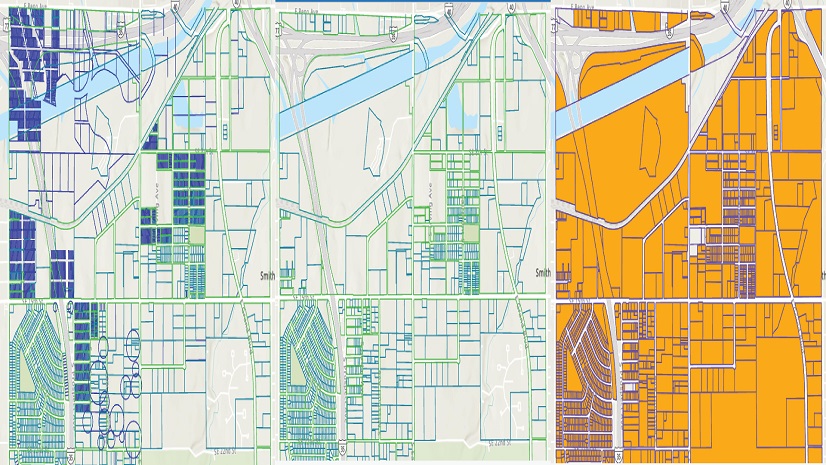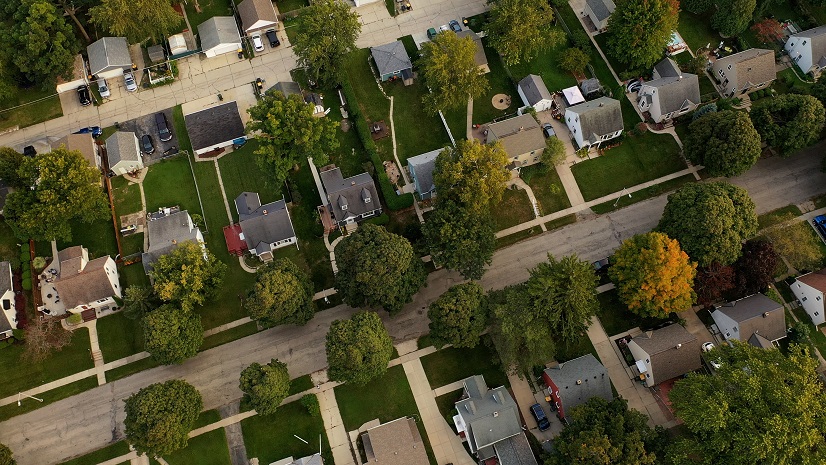The convention center in the mile-high city of Denver, Colorado, was bustling with activity during the International Association of Assessing Officers (IAAO) annual education conference. With a record 1,700 in attendance, networking opportunities abounded, classes were full, and the exhibit hall was ripe with innovation.

I enjoyed the opportunity to talk with many of you about the challenges you face in the assessor’s office and how geographic information systems (GIS) can be leveraged to address many of them. A common theme that emerged was exploring 3D cadastres to address the increasing complexity of land uses and other interests that impact valuation and taxation. This pattern aligned well with the plenary keynote I delivered with Carmela Quintos, Ph.D., Assistant Commissioner, Property Valuation and Tax Mapping at the New York City Department of Finance. Carmela and her team have recently rolled out a new Property Information Portal (PIP) for New York City that includes 3D cadastre along with many other enhancements. For those unable to attend, I have included a summary below.
Some History – And Technology, Too
I opened the plenary by exploring the history of land records and taxation, starting in ancient times. We learned that many aspects of the work done in today’s assessor’s offices have not changed through time and that the core goals of providing fair and equitable property valuation remain unchanged. Some notable shortcomings in assessing and collecting taxes fairly and the resulting consequences were also reviewed. Then, we took a closer look at some of the events in our country’s history that shaped how we conduct land transactions and what caused these processes to “freeze” and remain constant since the late 1800s.

Although how we conduct land transactions and carry out assessment and taxation has remained largely unchanged, we have modernized many processes surrounding it with technology. Computing capability and, subsequently, GIS have greatly improved the efficiency and accuracy of our work. More recent advancements, such as building information modeling (BIM), enable us to reach even greater heights, particularly in developing 3D cadastres. The results are far-reaching. Other government departments benefit, as do the residents. For instance, digital cadastral maps are the most requested dataset in local government and provide benefits that extend to disaster preparedness, planning and zoning, public works, and private business.
New York City’s Journey to 3D Cadastre
Carmela then walked us through New York City’s experience moving to a 3D cadastre. She explained how their digital tax map from 2008 was based on a 2D cadastre. While it consisted of the fundamental information one would expect in a cadastre (parcel map, ownership, and real property information), it had limitations. For example, it could not render condominium lots, condominiums within condominiums, air lots, and subterranean (utility) lots. This is substantial, particularly in New York City, with over 290,000 condominium lots!
So, they embarked on a major modernization project to incorporate 3D cadastre capabilities and improve the public’s experience interacting with their digital services. Some of the advantages they are realizing from 3D cadastre include:
- Views of interior layout and limited common elements (LCE), which are common building spaces that are used exclusively by certain units
- Improvements in model performance by adding z-coordinate and 3D variables
- Dynamic mapping capability versus static pdfs
- A Multiuse Cadastre with information included at the unit level

Staff can now render and manage condominiums within condominiums in a web environment and understand, in greater detail, what is happening at the unit level. They can also consider viewshed impacts on value and limitations or impacts from aerial and subterranean rights. Stakeholders can access the exterior view, 3D view, and detailed property and building information along with assessment, tax map, and sales histories. The site also includes a convenient way for property owners to update their information, pay taxes online, schedule an appointment, and other services that would previously have required a trip to the assessor’s office.
With change often comes challenges, and the NYC effort was not immune. Carmela outlined some challenges they encountered:
- Data
- Conversion of legacy data to digital format
- BIM (digital) submissions
- Integration of systems and workflows across the City
More specifically, data powers the 3D cadastre, and there is still much work to be done converting legacy paper floorplans. This requires additional staff training and time or outsourcing the work to consultants. Moving forward, the desire is for all new submissions to come in digitally as BIM files or other digital formats. While the technology is in place to accommodate digital submissions, it is voluntary and will remain so until a Citywide strategy for accepting digital floorplans is developed and ordinances adopted. For now, processing new submissions will take on a hybrid approach, with the long-term goal of eventually achieving full digital submission.
Applications Beyond Assessment
There are many ways 3D cadastre can be leveraged beyond assessment. Adding the third dimension to the cadastre improves models when elevation is correlated to the variable that a model is trying to predict or estimate. For example, building models that estimate wear and tear can be used to trigger inspections due to the correlation of building façade deterioration to elevation. Climate change and digital twin models can differ by elevation, affecting condo units differently. NYC’s opportunity for advancement is limitless, and I can’t wait to see the innovative ways in which they continue to leverage their 3D cadastre.
We will see you at next year’s IAAO education conference September 21-24, 2025, in Orlando, Florida! In the meantime, to learn more about managing cadastre in GIS, please visit Esri’s Parcel Management page.






